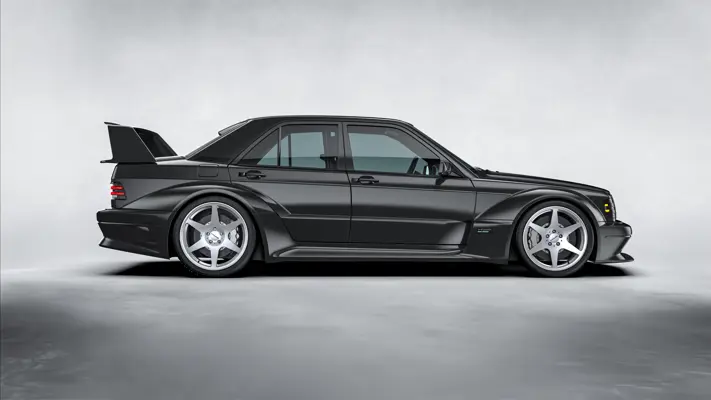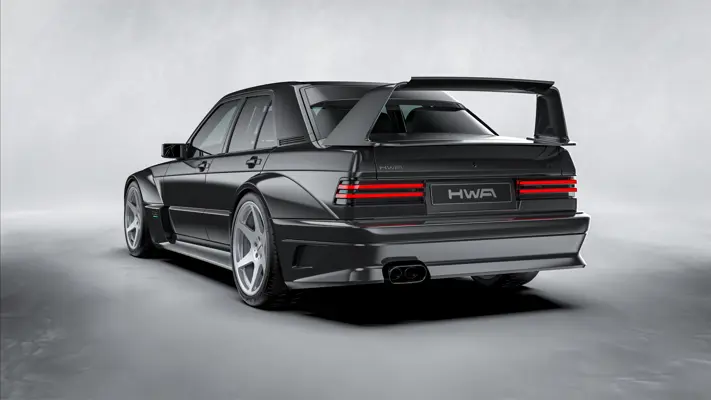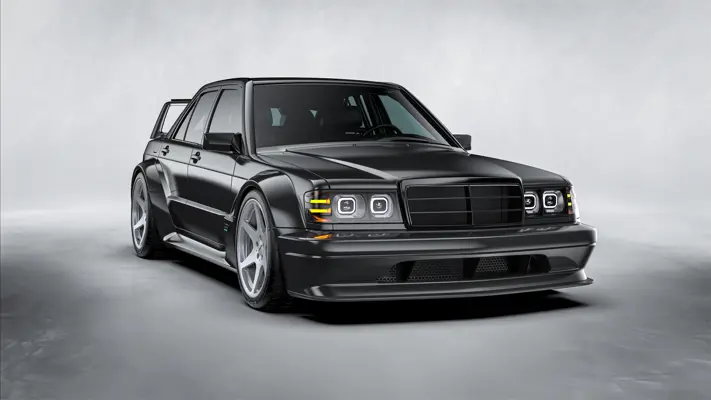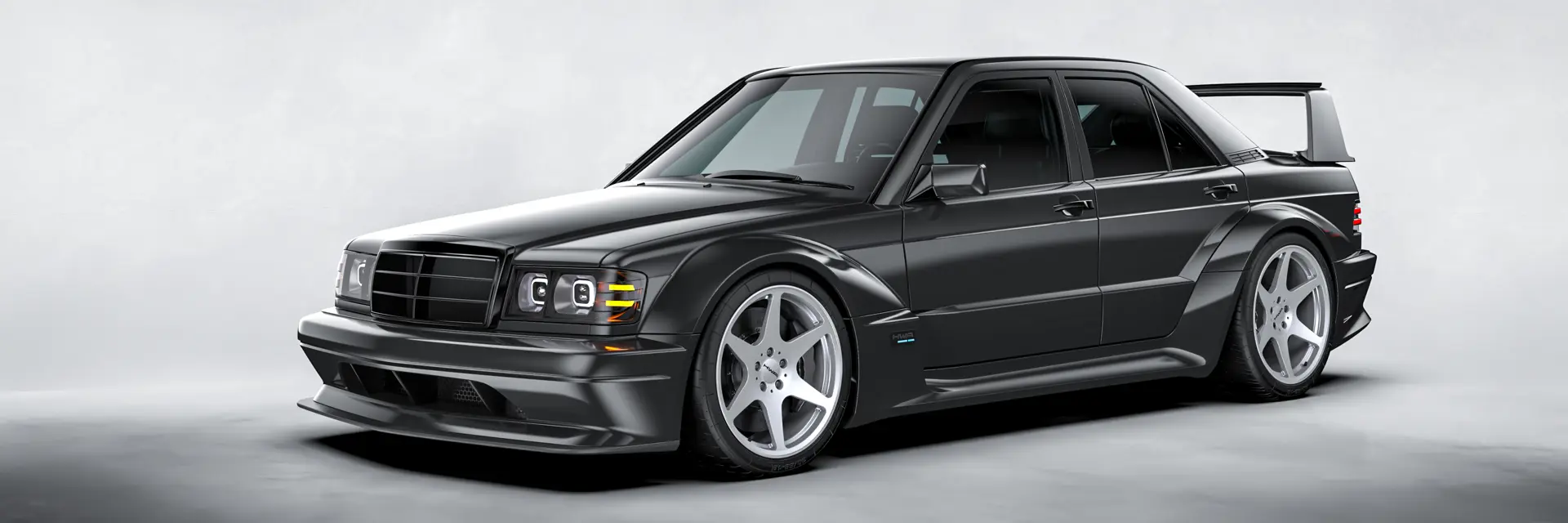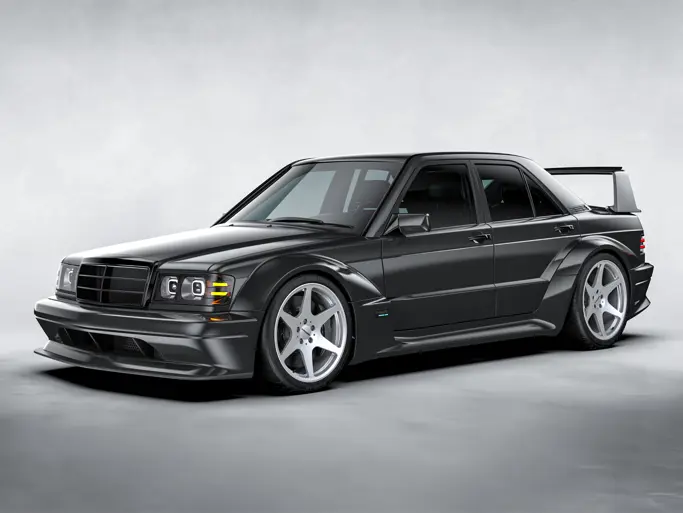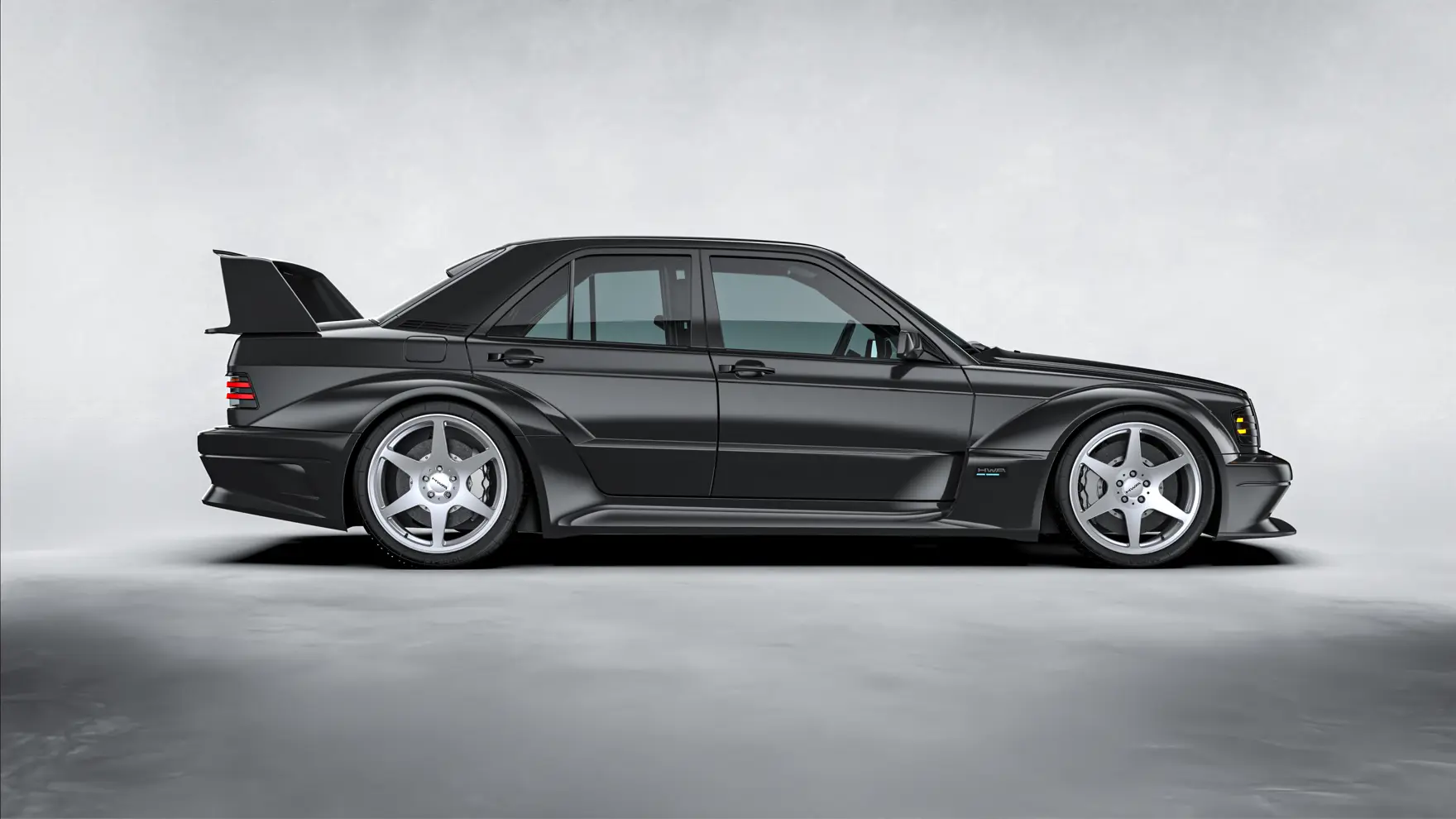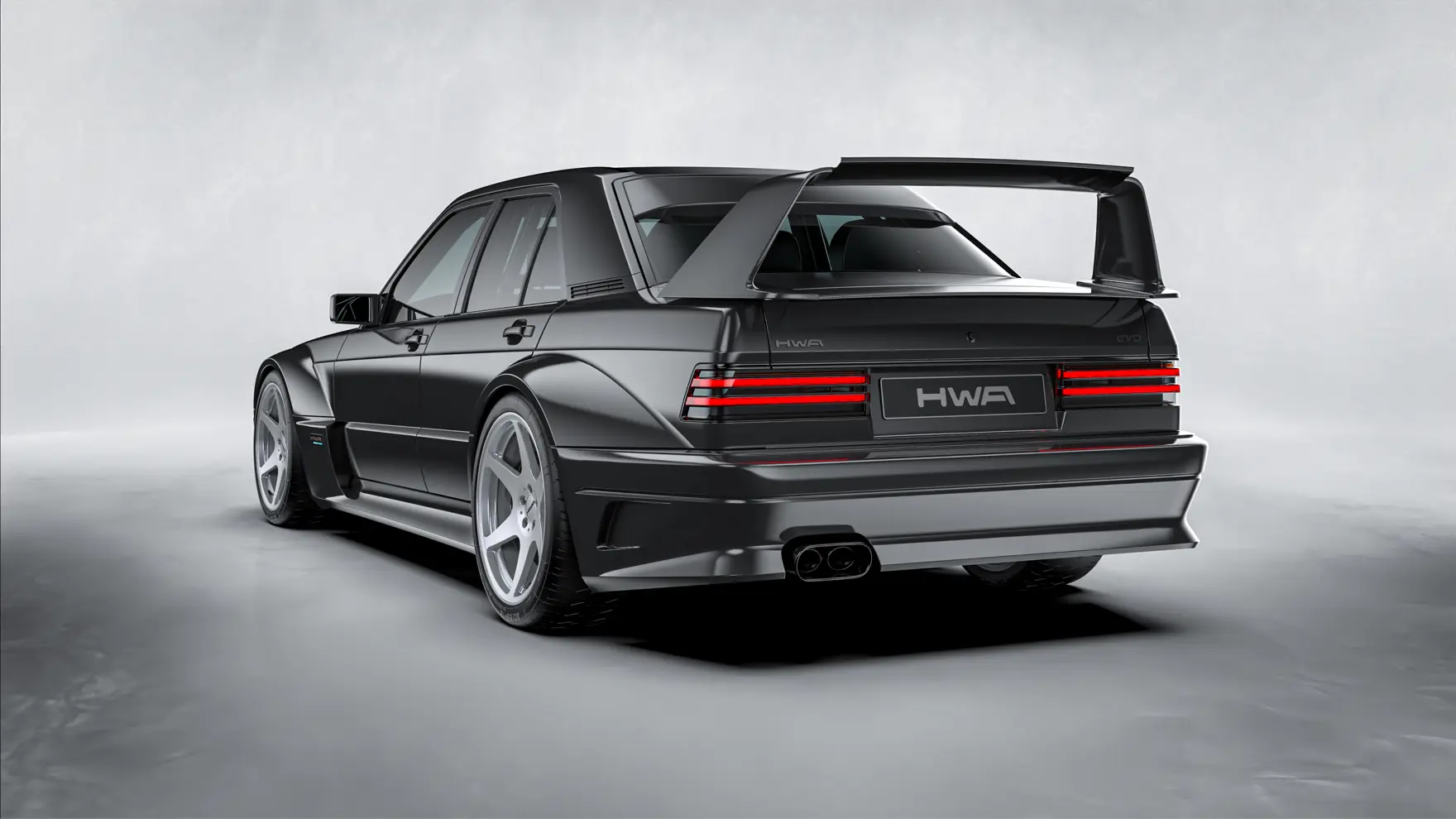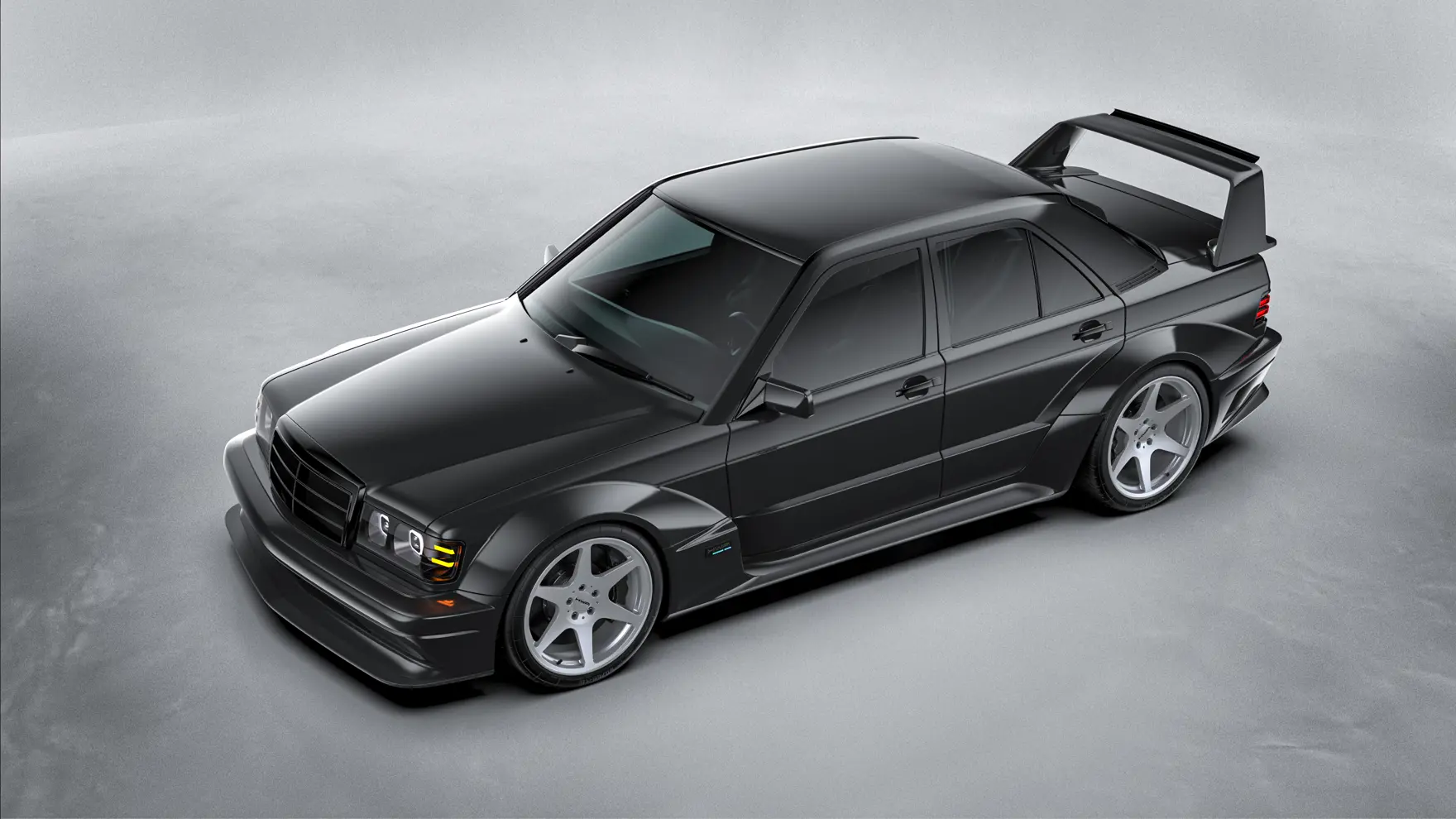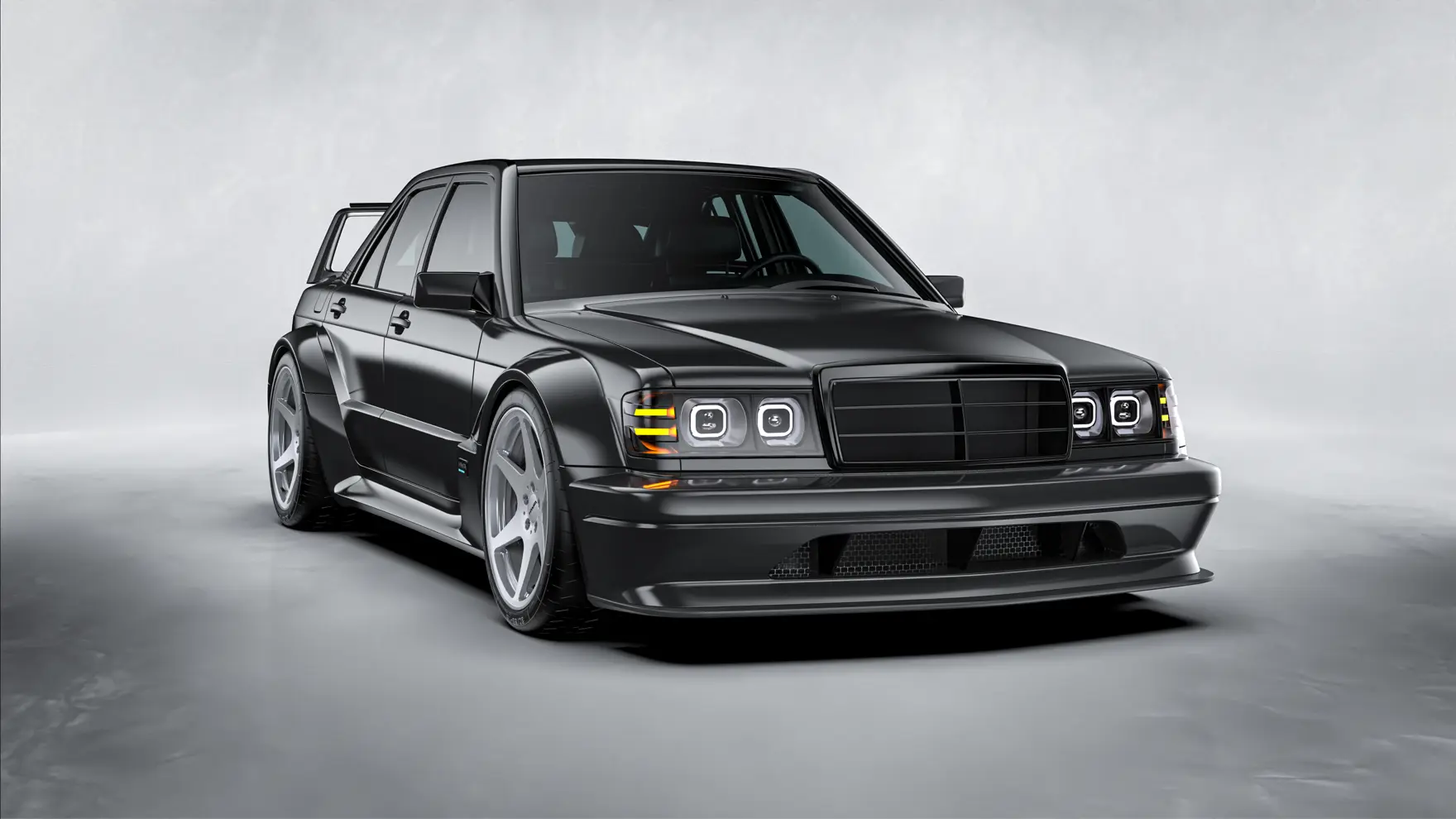Think of the wildest, most sought-after homologation specials ever created, and somewhere near the top of that list—battling it out among BMW M3s and Audi Sport quattros—would be the Mercedes-Benz 190 E 2.5-16 Evolution II. When the model first arrived in 1990, it was as if the standard 190 E—a boxy and uninspiring saloon designed for sales reps and mid-level management—had appeared from an alternate reality. Rippling with muscle and with an attitude even meaner than its Evolution I sibling, the car had been transformed. Everyday hack had become musclebound maniac, a transition that took it from the supermarket parking lot straight to the track.
A joint project between Mercedes-Benz, Cosworth Engineering, and AMG, the 190 E 2.5-16 Evolution II was not only one of the most refined and engaging sports saloons ever created, it was also a force on circuit, dominating the competition and winning two back-to-back German Touring Car Championships for Mercedes-Benz in 1991 and 1992. Famed for its bonkers aero kit with an enormous rear spoiler and wheel arches that burst out of its flanks, it proved so effective that other DTM teams fought to have it banned. BMW’s Head of Research, Wolfgang Reitzle, reportedly claimed that “if that rear wing works, we'll have to redesign our wind tunnel." Rumour has it that’s exactly what they did.
For all its on-track exploits, the real magic of the Evo II was the limited number of 502 homologation variants that were released into the wild, baiting rivals with their 7,800 rpm, 238-horsepower 2.5-litre ‘four’, five-speed race-spec dogleg gearbox, and looks that could stop traffic. As a road car it became the stuff of legend, so much more special than any of its BMW-badged rivals. Occupying the hallowed ground of an untouchable cult classic, it’s hard to imagine how it could possibly be improved—or more importantly, who could be trusted to do the task justice.

The layman may suggest AMG, but to the true enthusiast only one company comes to mind: HWA. Named for the founder of AMG, Hans Werner Aufrecht, and headquartered in AMG’s spiritual home of Affalterbach, Germany, HWA came into being when AMG was finally sold to Mercedes-Benz at the end of the 1990s. All, that is, except for the race division, which was retained by Aufrecht, renamed in his image, and immediately charged with running and managing AMG Mercedes’ assault on the Deutsche Tourenwagen Masters. Over the next 20 years, HWA would deliver Mercedes-Benz no fewer than 10 DTM Teams’ Championships and eight Drivers’ Championships with the likes of Bernd Schneider, Gary Paffett, and Paul di Resta. So deeply was HWA entrenched in the world of motorsport and Mercedes-Benz that the firm was charged with production of the Mercedes-Benz CLK GTR Straßenversion—arguably one of the most extreme and collectible roadgoing supercars of the 20th Century—and would go on to contribute to the Apollo Intensa Emozione and De Tomaso P72, and developing the engine for the Pagani Huayra R.
Understandable, then, that the firm felt qualified to revive one of the most celebrated and successful models from Mercedes-Benz’ back catalogue—the results of which were finally revealed earlier this year. First came digital renders that hinted at the styling, with enormous staggered 19- and 20-inch wheels, a wider track with blistered front and rear wheel arches, and slick LED headlamps and taillights. Then, we were treated to a first view of the prototype, a deeply menacing interpretation of a great so purposeful that it’s had people clamouring to place their order.
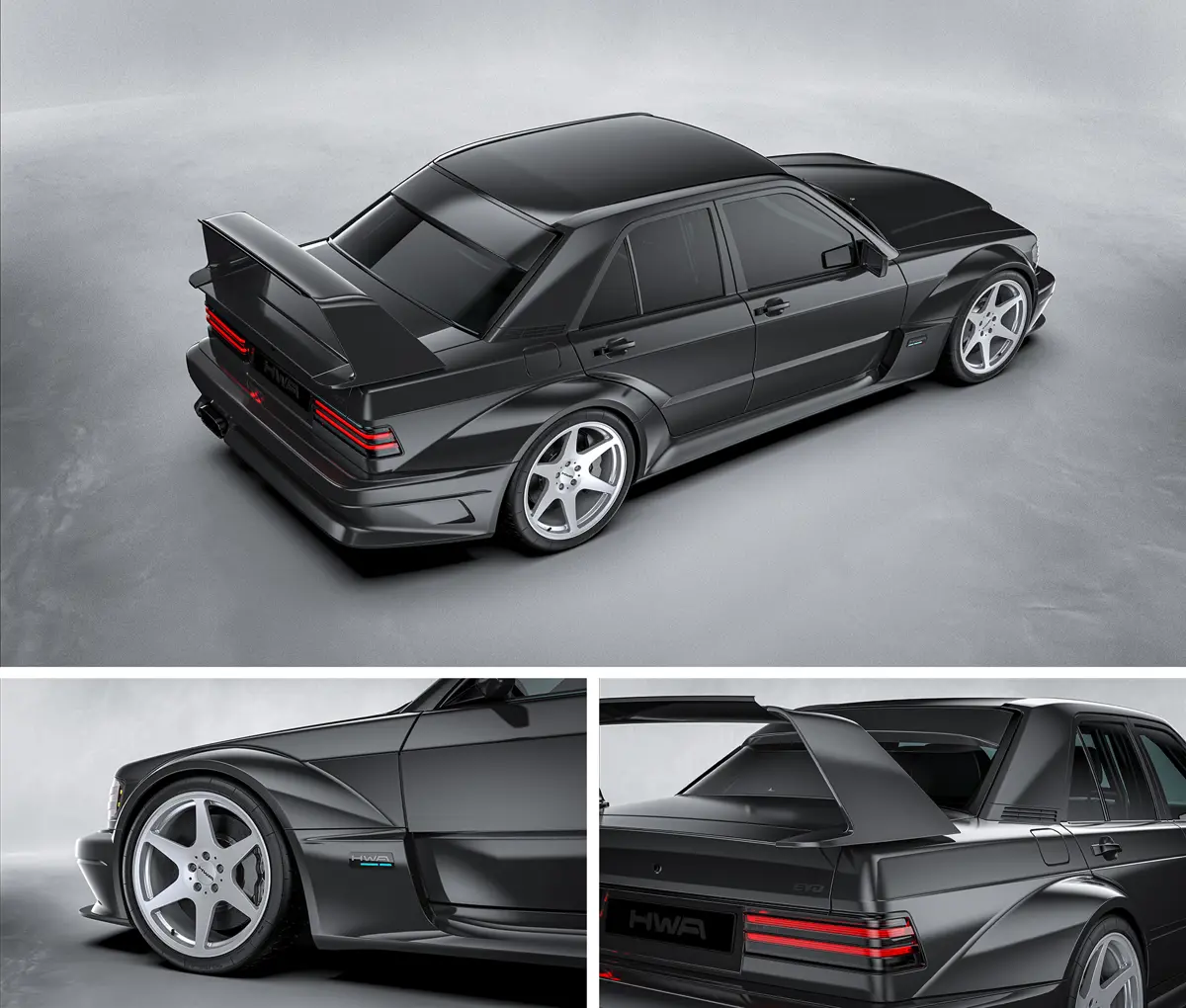
Several manufacturers have revisited iconic designs, most recently with Prodrive’s celebrated P25, but you don’t have to spend long around the HWA EVO to realise that it is so much more than the modernisation of an existing design: it’s something altogether more impressive.
For a start, there’s that wild bodywork. Amid the gorgeous new styling cues like the integrated vents and double bar radiator grille, the iconic ingredients of the original design are all there, from the flared arches to the enormous rear spoiler. But take a closer look and you won’t find any of the typical joins and panel gaps that marked the Evolution II’s aero kit. That’s because the EVO’s carbon composite bodywork is almost completely bespoke. In fact, you’ll have to look pretty hard to find any trace of the original 190 E; only the centre section of the monocoque is retained, with everything forward of the bulkhead custom built in steel and aluminium—just like the firm’s bespoke racers.
It’s a similar story at the rear of the car, though this has been further adapted to accommodate a rear-mounted six-speed transaxle, a vital element in helping the car achieve its perfect 50:50 weight distribution. The suspension has also been improved, with double wishbones at each corner and the option of active dampers and carbon-ceramic disk brakes. Even the wheelbase has changed, the front axle being moved forward some 50 millimetres, again to aid weight distribution. In essence, the HWA EVO is a brand-new car—one that benefits from the same level of care and attention to detail lavished on the firm’s championship-winning race cars.
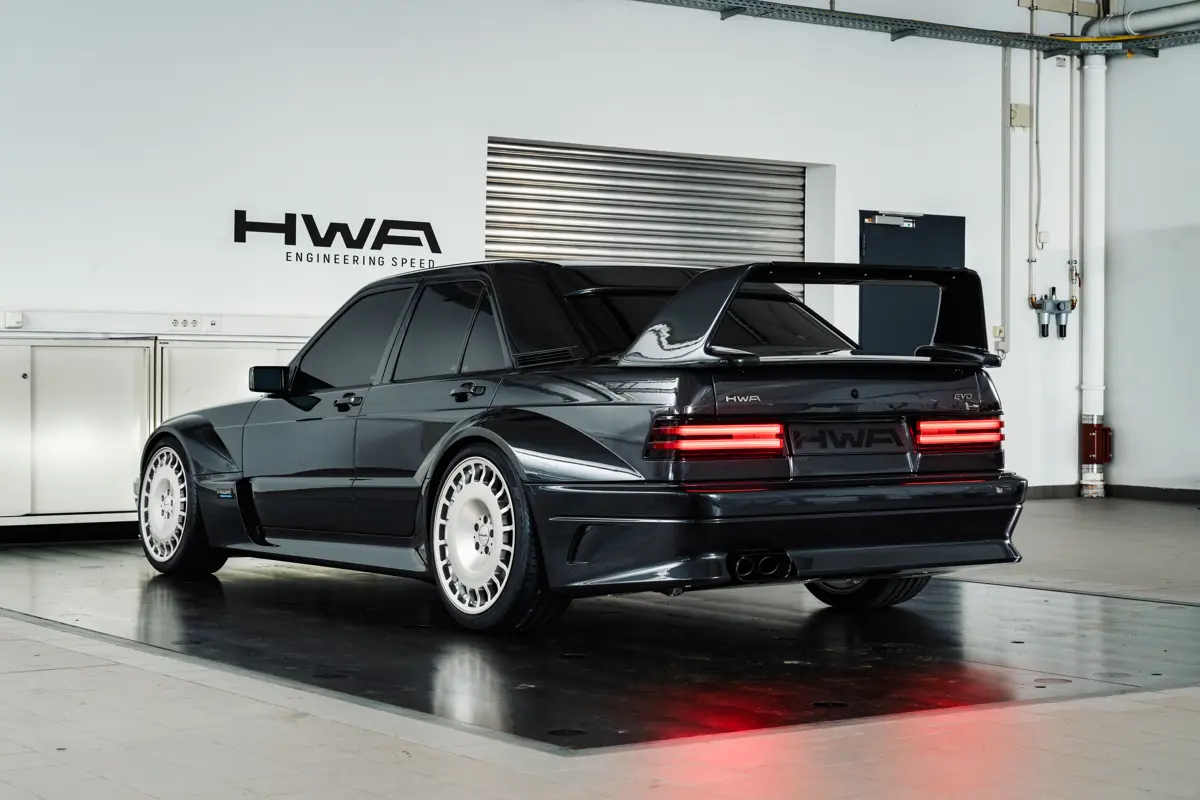
The original Evolution II spun to a dizzying 7,800 rpm but only produced in the region of 240 horsepower, so it’s understandable that HWA looked beyond its forebear’s 2.5-litre four-cylinder engine when it came to selecting a powerplant. Instead, engineers opted for the tried and tested, twin-turbocharged 3-litre M276 V-6. Short and light, its size allows it to be mounted behind the front axle for a mid-front configuration more commonly seen in high-end supercars such as the AMG GTR and Ferrari 12Cilindri. It also boasts a 60-degree angle that contributes to a lower centre of gravity. All that is great news, but the best is yet to come: the new dry-sump engine produces a conservative 443 horsepower in standard trim, rising to a spinetingling 493 horsepower in top-spec “Affalterbach Package” guise, which brings with it carbon ceramics, a sports exhaust, and a higher final drive pushing the top speed from 168 mph to 186 mph.
Just 100 of these special cars are expected to be built, with the lion’s share of production already being accounted for in anticipation of deliveries beginning in 2025. One of these slots, slated for chassis 000, is set to be auctioned at The Tegernsee Auction on 27 July.
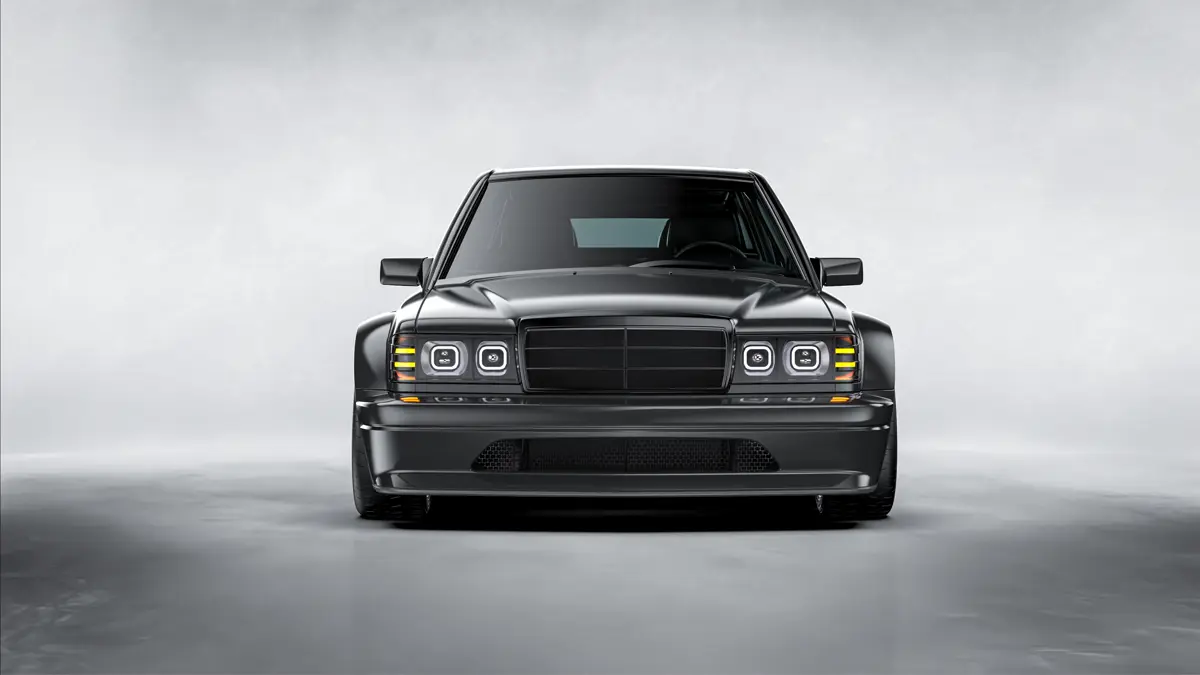
The lucky buyer will not only benefit from the first chassis number to follow the one-off prototype, but will, by separate negotiation with HWA, have the option to fully specify the car to their requirements. This includes everything from replacing the black grille with a chrome equivalent to opting for a slick digital render of the original Evo II’s dashboard instruments. The aforementioned active dampers and ceramic disks will also be on the options list along with an 85-litre extended-range fuel tank and a fitted luggage set, not to mention a fabulous array of colours missing from the original 1990 car, which was only available in Blauschwartz. HWA will even offer a number of historic liveries, bringing to mind notable 190 E racers of days gone by—we’d find it hard to look beyond the Camel-liveried Evo that Roland Asch raced to victory at the Yellow Pages 200 at Kyalami in 1990.
With the full run of 100 vehicles close to selling out, The Tegernsee Auction presents not only a fantastic opportunity to acquire one of the most sought-after and hotly anticipated cars of recent years, but the very first production car to bear the name of Hans Werner Aufrecht: chassis 000.
